“People of the Dawn”
03/27/2017
Chinese Cinema Looks at Ethnic Minorities
There is a strong temptation on the part of those from outside of China to either think of it as a monoethnic mass or to go the other way, to narrow focus onto its ethnic minorities as an antidote to the vastness of the country and wide reach of Han hegemony. Just as orientalism isn’t only a zero-sum game between the West and the East (in spite of what any correspondence-student of Edward Said – and they are legion – will argue), but can just as easily exist across and within Asian societies, so too does that desire to bypass the flawed and simplified notion of homogeneous China and fixate on minority cultures exist among Han Chinese themselves. In visual culture this can be positive, celebrating difference and valuing cultural diversity. But more often than not, it’s used to cement notions in the Han audience of their own dominance, and also create an image of an untroubled coexistence, one lacking in history, humanness, and political implications.
Guided by the ever-evolving program of the communist party, China’s visual culture has tended towards downplaying cultural, religious and historical differences within the country. And when specificities of different peoples are represented, it’s often as a unified medley, reduced to routines in a cultural song-and-dance. This is largely due to how the Han majority have historically viewed other groups, and how they have used other groups to maintain a strong sense of their own identity. In spite of this the fact remains – and hopefully will continue to remain – China is home to a bewildering array of ethnicities. Many of them, before becoming “minorities” within the nation, were independent kingdoms or states on their own.
While it has a considerable history, only recently has the concept of a cultural tapestry begun to take precedence. Minority-themed films have played a role in creating this perception within the Han majority, and also in whitewashing the problems that arise from incorporating different ethnic groups into the nation, the repression and deletion that has occurred to varying degrees. These films end up fairly ambivalent documents; in one sense they celebrate cultural difference (often in exaggerated and unrealistic ways) but they also reflect its erasure, which must have already been considerably under way by the time cinema reached them.
In an essay called “Happy Dancing Natives”: Minority Film, Han Nationalism, and Collective Memory, Benjamin D. Shaffer writes about how depictions of “exotic” and “colorful” non-Han people of China are often fondly remembered by Chinese people today, their sense of cultural nostalgia enriched by these diverse cultures onscreen, regardless of how crudely recreated they are. He writes that,
scenes of song and dance from these films conjure vivid memories among members of Chinese society today. In many ways, minority film has not been as much an ethnographic tool as a “boundary-constructing” device that defines majority and minority status in China. Some scholars argue that these films represent “internal orientalism” and cultural imperialism, while others suggest milder forms of naïve romanticism.
No doubt many can be read both ways. While some are more steeped in romanticism and nostalgia, there are others that serve a more trenchant political purpose, and both types of films share common qualities, both in their treatment of cultural difference and their visualizing of the minorities and their worlds.
The films contribute to Han self-perception even when it doesn’t really apply, such as films that don’t have any Han characters. This overarching sense of being a multicolored nation always comes with concurrent distancing devices, which range in the films from misunderstood rituals to special effects sorcery. Their depictions of minority customs also can be anything from innocuous exoticism to the outright denigration of non-Han ways of life.
Five Golden Flowers
China / 1959 / Mandarin
Directed by Wang Jiayi
With Mo Zijiang, Yang Likun, Huang Zhong
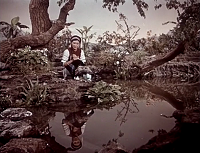
Five Golden Flowers (1959)
Five Golden Flowers is a classic example of the minority film genre, and one that continues to be referenced due to its immense popularity. Set among the Bai people around Dali in Yunnan, its characters show many of the identifiable minority values: modesty, community, jolliness, a certain lightness of life. The film is a musical romantic-comedy that contains lessons packaged for a mainstream audience.
From the very start, the film treats the Bai people with a nostalgia commonly reserved for pre-modern China. Human movement – work – is shown as a sort of ballet, easy and fun, and free of hardships. Both labor and festivities are couched in postcard beauty.
A young man named Ah Peng, on his way to compete in a horse race by Erhai Lake, stops to help six young women fix their wagon wheel. That’s where he first sees Jinhua, whose beauty overtakes him. He shows up late to the race but still wins easily, and is held up as an exemplar of the Bai community. Afterward he searches for Jinhua in the crowds of people, but ends up alone.
Later he finds her by a Disney-looking pond in a glen that is filled with butterflies. She sings an unsubtle song about butterflies and their attraction to nectar. Ah Peng joins in, and their duet overflows with natural allusions such as lichen and swallows’ nests. He has to return to his home village, but gives her his dagger as a symbol that his love for her won’t rust.
In a self-referential development, two men from the Changchun film studio (the very studio that produced Five Golden Flowers), Li and Meng, are in Dali to observe the Bai community. They happily sketch the local people, and Ah Peng models for them in a boat on Erhai Lake. It is there that he learns of the presence of Jinhua, his love from the year before, and he hastily jumps into the water to find her. To his dismay, it’s not the same Jinhua that he knew. In fact, there are over one hundred women named Jinhua (“golden flower”) in Dali, so he begins a quest for the proverbial needle in a haystack.
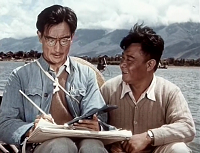
Five Golden Flowers (1959)
He volunteers to ferry the two studio scouts around in his cart during their visit, enlisting their help on his scavenger hunt for the Jinhua he seeks, who, it turns out, is the deputy community inspector. From the first sequence of the film, when she wore a traditional costume and played a wistful, romantic role, she has become a socialist caricature of a no-nonsense leader. However, when she discovers, midway through the film, that Ah Peng is looking for her, she puts in her organizational effort to track him down.
A cadence of unlikely coincidences occur, more to retard their progress at finding each other than help it, eventually coming together to reunite them. At one point he even sees her at a wedding banquet, but feels crushed when he mistakenly thinks she’s the one getting married (she’s in fact just presiding over the rituals). Even with both Ah Peng and Jinhua actively seeking one another, plus all the others acting as go-betweens, it predictably takes until the end of the film for it to happen. This gives the sense that all unseen forces, even one as unbending as fate, can be overcome by the power of community.
Non-Bai outsiders have an easygoing contact with the Bai in the film. While the two Han characters are markedly different, wearing modern clothes and being unfamiliar with Bai customs, they pass through the community without any conflict, functioning more as lighthearted straight-men than comic relief. Representatives of the rational world, where romance and caprice don’t rule people’s lives, they are there for comparison to the relatively sensuous and fun-loving natives. Through them the makers of Five Golden Flowers are inserting themselves into the film, acting almost as tourist guides to show both the foreignness of the minorities and that they aren’t that strange or inaccessible. Bai customs thereby become only visual displays to be seen from the outside, without depth or historical significance.
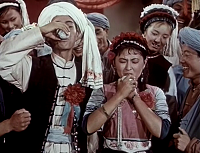
Five Golden Flowers (1959)
While it is her beauty that captivated Ah Peng, Jinhua is perpetually identified by her job (as opposed to herdswoman Jinhua, manure collector Jinhua, etc., whom we meet throughout the film). This implies that, in a modern China, women are more defined by the work they do than by the way they look, and that’s an important revolutionary statement. The shallowness of traditional rites of courtship in Yunnan minority communities – wherein young men and women select each other based on looks – are shown to be superseded by factors like work ethic and accomplishments.
Ashima
China / 1964 / Mandarin
Directed by Liu Qiong
With Yang Likun, Baosier, Cui Chaoming
Ashima is a magic-inflected opera that also tries to incorporate a lot of nature and ethnography. It begins with A Hei searching the “stone forest” of the Yi Autonomous County, near Kunming – unbelievable stone pillars (or trees) sprouting up naturally from the landscape – for his lost love, Ashima. Like in Five Golden Flowers, which takes place around Erhai Lake, Ashima plops us down in a highly recognizable place, as though Yi people go walking through the stone forest all of the time. It’s tying the minority characters (who are all the characters in the film) to the land, and they remain inseparable from it.
A shepherd, A Hei first encounters Ashima (Yang Likun, who also starred in Five Golden Flowers) by the sound of her voice, as she sings an answer to his flute song from across a valley. As he searches for her, girls tell him “she is in the clouds” and “she is in the lake, in the flowers.” It turns out that she is real, and they begin a courtship.
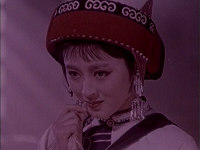
Ashima (1964)
A Hei goes to another pasture and leaves Ashima’s village. After he leaves, she is forcibly married off to A Zhi, the wealthy son of a landlord. Virtually a prisoner in his house, Ashima “calls” to A Hei via nature, her message being carried through rivers, trees and soil, and he psychically, instinctively hears her plea for him to come back to her. Just for effect, a stream runs backwards. A Hei traverses mountains and valleys, avoids a rock slide and parts a forest with a single arrow. He forces his way into the palace (again, with a magic arrow) and takes Ashima back. Their happiness is short-lived, as A Zhi floods the valley, killing Ashima. Thereafter her spirit is said to inhabit the whole land. Her “natural” beauty has become the beauty of nature, and she has become literally incorporated into the environment.
Of course, the film isn’t peddling its fantastical elements as ethnographic, but rather as a folktale. Still, it must have contributed to the audience’s associations between minority cultures and “magical” beliefs that made a fantasy more saleable than if its characters were Han and it was done in a completely different setting. Not only does the setting make fantasy more acceptable, but primal, magical and singing minorities are perhaps more assimilable to a mainstream audience than if a film were to look at the Yi, a real group with its own culture and political necessities, objectively.
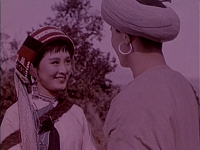
Ashima (1964)
One thing that sets Ashima apart, besides that it replaces dialogue with songs, is that it takes place entirely within a Yi community. It doesn’t have Han characters to directly contrast with their way of life, as in Five Golden Flowers and Sacrificed Youth (discussed later). What it has in common with other films is how it builds a strong feeling of continuity from nature to the minority people, the implication being that they are to be incorporated – owned, to some degree – by the nation, just as territory and resources are. The representations of ethnic minorities in Chinese films had differing purposes towards the overarching national project. They all serve it to some extent, but there are films that had a more pressing political message than the softer films like Ashima and Five Golden Flowers, whose primary purpose seems to have been one of introducing minority cultures into the larger family of the nation.
Ethnic Hui Detachment
China / 1959 / Mandarin
Directed by Feng Yifu & Li Jun
With Li Po, Hu Peng, Liu Jiyun
By around the tenth anniversary of the formation of the People’s Republic, the Chinese authorities started to become satisfied enough with their incorporation of ethnic minorities that they started to allow films that celebrated those minorities’ roles in the victory of communism over the Kuomintang and the Japanese. The political imperative of the Great Leap Forward, at this time, must be considered a factor in the construction of minority-themed films. In an attempt to show how a religious group, the muslim Hui people, became communists during the second Sino-Japanese war, the film Ethnic Hui Detachment came out, partly a bio of the real-life figure Ma Benzhai, a Hui leader who started as an anti-Japanese rebel.
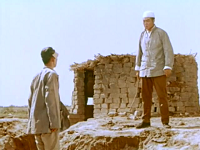
Ethnic Hui Detachment (1959)
The in medias res story begins with a Hui village that has been ransacked by the Japanese. Ma walks in slow-motion through the rubble, finding horrific remnants of the attack: people have been bayonetted, buildings burned, and their mosque destroyed, blowing away with the dry loess of the land. He addresses a crowd of men, saying that they must not be oppressed by the invaders. When a Kuomintang representative comes and tries to lure him to their side, he sternly refuses.
And so begins the formation of a guerilla force, leading to its uneven absorption into the PLA. At the heart of the story is an unsmiling purist, Ma, whose bearing is almost spiritual, but who isn’t bogged down in communist dialectics, religion or nationalist fervor. He is the archetypal, even-Steven Chinese cinema hero – unromantic, endlessly virtuous and distinctly un-human. Gradually the less perfect around him, the venal and slovenly joiners, fall away. His foil, the undisciplined sergeant Bai, abuses the volunteer soldiers and eventually is found out to be conniving with the enemy, and must be executed.
The narrative is inextricable from the preposterous action sequences and heroic histrionics that punctuate its disunited episodes. The film tackles the issue of landlords and how embedded they were in rural life. Bai, representative of everything bad in Hebei, where the film is set, is an accepted member of the fighting force and a high-ranking officer, but still extracts tribute and loans from poor people just as he did in the village setting. This is less a film about war (although battle scenes dominate it) than about the social strains brought on by a revision of the old hierarchies.
Things aren’t perfect between the Hui and the Han communists, but they have a common enemy in the Japanese. Indeed, they are fighting for a common cause but are not really found to be mixing. It takes Ma much of the film to be completely won over to their side. Thus the Hui go from fighting the Japanese on their own to joining the wider nation.
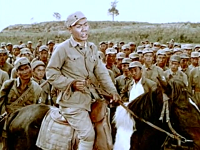
Ethnic Hui Detachment (1959)
Han Yanli writes, in an essay entitled Film, Ethnic Minorities and the Anti-Japanese War, “the central part of the movie focuses not only on how Ma changes his appearance and demeanour but also on the psychological process by which he arrives at the decision to become a true follower of the Chinese Communist Party.” The change of appearance includes, significantly, no longer wearing the white skullcap and peasant outfit that associate him with his people. With the replacement of Hui nationalism with communism, so too does the protagonist lose his formerly counterrevolutionary characteristics (such as individuality and impetuousness) to become a model leader.
That the film is set in 1938 makes its historical purview pre-revolution, although it often feels like it has a post-revolutionary vantage, like Serfs or Visitors on the Icy Mountain, which are set in the early 1950s. All three films were made around the time of the great leap forward, and there must have been a lot of state pressure at the time for films with positive political messages about minorities. Films from this period can take the step towards suggesting that not only are the communists the liberators of the minorities, but that the minorities were instrumental in the supposed total success of the revolution.
Visitors on the Icy Mountain
China / 1963 / Mandarin
Directed by Zhao Xinshui
With Liang Yin, En He Sen, Abudulimiti
Set in the Pamir mountains in the far West of China in 1951, Visitors on the Icy Mountain is another production of the Changchun studios that attempts to both valorize and set apart the minority populations. It contrasts the beauty of the glacial wilderness with the hard work of soldiers on the fringes of the empire. The backdrops are like Flemish landscapes, layered and fading into the distance, while the mountain-top sets tend to be detaily ice sculptures.

Visitors on the Icy Mountain (1963)
Gulandanmu journeys with her new husband Nawuruzi, towards the mountain pass where his home village is. A young Tajik soldier with the PLA named Armir crosses paths with the group, who are headed to the same village where he is to be stationed. He seems quite sociable and has an ear for the local turn of phrase. However when he learns that the woman traveling with them is Gulandanmu, he is stopped right in his tracks. The sight of her mixes with his memories of Yecheng Town, and how, as a teenager, he had offered her father coins in return for her hand in marriage. However he was passed over for a wealthy man who took her away.
When he arrives on base he’s welcomed warmly by the Han soldiers, all of whom seem to mix cordially with the Tajik villagers. Things seem to be going well there, except for occasional intelligence regarding a possible attack by enemies of the revolution, a gang seen at the beginning of the film gunning down a group of villagers in the snow.
A parallel storyline unfolds – introduced in quite a disorienting juxtaposition – of the real Gulandanmu, held captive by her wealthy warlord husband up in the mountains. She is the lookalike of the one down in the village, whom Armir thinks is his childhood love, and who is actually spying on the communist soldiers for the Kuomintang. None of the main characters are aware of what is going on. The only one who suspects something is Kara, a poor traveling minstrel who courts the real Gulandanmu when her husband is away. He listens in on the husband and his psychotic vizier (who is married to the spy in the valley) plotting one night. Meanwhile the captive girl’s aged servant, Amanbayi, talks of taking her away to safety. He worries, however, that when they seek asylum with the communist guard, that those soldiers won’t differentiate them from the counterrevolutionaries.
While Armir is a romantic lead, his job takes precedence over his longing for the woman he thinks is the Gulandanmu of his childhood. At commander Yang’s request, he tells her that they can’t be together, so as not to upset the delicate interaction between the soldiers and the locals. Nonetheless Nawuruzi gets wind of the pair’s history together and repudiates them in front of the other soldiers. His father, a village elder who also doesn’t want to jeopardize relations with the Han, shows up and whips Nawuruzi publicly.
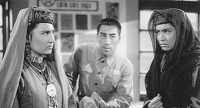
Visitors on the Icy Mountain (1963)
The spy goes to commander Yang and tells him she loves Armir and wants a divorce from Nawuruzi. Her motive for doing this is apparently to get more access to the army base so she can pass the secrets along to the anti-communists. As fraught as things are, Armir is so far unaware that they are about to get considerably more complicated, when another Kuomintang spy is killed and, later, when the true Gulandanmu emerges from the wilderness with Amanbayi.
“I am quicksand in the Gobi desert,” Gulandanmu sings to Kara. It is a powerful image. As a woman more captive than wife, she represents an extreme of cloistered modesty. Counterrevolutionary aspects of Tajik mountain life – the sequestering of women, for instance – are considered completely wrong, whereas laudable traits – such as Armir’s hard-working fidelity to his group – are shown as easily commensurable with the nationalist cause.
The soundtrack incorporates Tajik music at a blustery pace. The choir that sings on it praises the Tajik people and their land. Again, the people and the land seem inseparable. This phenomenon serves to calcify cultural difference into a set of recognizable images, and side-steps the reality that, to varying degrees, many minority cultures throughout China have been significantly hollowed out, many of the lands associated with them having been repopulated, over centuries, by the Han.
Serfs
China / 1963 / Mandarin
Directed by Li Jun
With Dui Wang, Yangjie Baima, Zhuoma Shicui
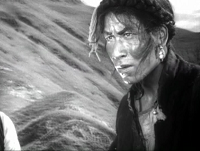
Serfs (1963)
Immediately following the revolution, nowhere would justifications for Han expansion have been more urgent for than in the case of Tibet. In Serfs, one film attempting to simplify the complicated Tibetan issue, almost all local traditions and customs are depicted as detrimental to the people and in need of replacement. While there is the continuing effort on the part of Chinese filmmakers to show minorities as all part of a greater patchwork of the nation, that message only comes out in dribs and drabs, background to the more pressing need to show what abject circumstances the peasants were being liberated from. In its extremes, Serfs veers into almost total propaganda territory.
In the film, ordinary Tibetans are often literally chained in place, performing their work all day long with no relief. They are ridden like horses for the amusement of the rich, dragged behind actual horses and are used as human taxis, sustained only by an unwavering belief in reincarnation. Champa is one such peasant, raised by his grandmother. At the start of this film, both his mother and father die in the prison of the local landlord, after having been held there for minor infractions. From this fitting beginning Serfs continues, a film of hyperreal and nearly unrelenting cruelty, both visually and thematically. It has a narrative unevenness in common with Ethnic Hui Detachment, as alarming scenes erupt without preamble, lurching from one cruel event to another, punctuated by wordless reflection.
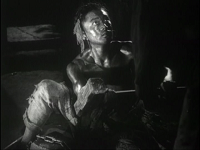
Serfs (1963)
While still a boy, Champa gets caught eating some of the ritual food set aside in a temple. For this he is beaten mercilessly. He tells his friend, a girl name Landuo, that he will rise up one day against the oppressors. Flash forward to his adulthood. A traveling nomad tells Landuo of a liberating army that will rescue all of them. Soon after that, Champa collapses while carrying his master across the pitted earth, is left for dead, and wakes in a communist hospital camp. This is his first brush with the approaching army. Later he tries to rescue Landuo from her de facto enslavement and take her to the safety of the army. She manages to join them but he is recaptured after falling into a river. He becomes a monk on a vow of silence, completely broken by the system and intent on living out his life in the relatively sheltered temple.
The central villain in the story is not one of the brutal masters but the cynical lama who wants to aid the counterrevolutionary forces by provoking the Tibetan people into an armed struggle against the communists. This is how he plans to maintain his position of power over the people, even while an older monk, convinced of the goodness of the communists, warns him otherwise. Champa witnesses an air-drop of weapons being smuggled into the temple, and decides to help the communist cause and prevent the insurgency from happening. Thus the struggle for liberation is taken over by the need to win the hearts and minds of the Tibetans.
Like in Red Sorghum (1987), there is a monumentalizing of the peasant’s body, making it more statue than flesh. The people, shining with the layers of butter that upland Tibetans applied to their skin in place of bathing, appear as bronzed colossi straining the dimensions of the frame. Their unreal luster refracting and shimmering in the black-and-silver palette gives their innate misery a molten effect, glossy but unforgiving, and so overblown that it takes on a liquid appearance. They seem to be made of the very metals – chains, gates, primitive torture implements – that hold them in place.
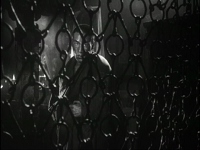
Serfs (1963)
As if purely in contrast to this hot sculpting of figures, we see the idealized rural world that is so often a feature of Chinese films: the tall and brilliant grass, the extreme light and the fluttering blossoms perpetually in bloom. The film moves through a surprising variety of landscapes – from precipitous dunes to yawning meadows, gulches and bluffs – more than would seem possible in the admittedly varied but also incredibly vast region. Unlike the Southern minorities, the Tibetans aren’t treated as part of the natural idyll, but rather are kept outside of it in toil and ignorance.
While many films of the time, by design, rhapsodize on rural labor, Serfs shows a people coming from a different historical period, pulled gladly into modernity. In the feudal Tibet of the film, before collectivization, work was in the service of landlords and lamas. The beautifying of village life done in other films of the period (and taken to fabulous places by the hallucinatory Ashima) would have disrupted the brutal message of extreme oppression and total liberation found in Serfs. The Tibetans aren’t seen working in harmony with nature, as its beauty and perfection are just out of their reach while under the thumb of the clerics.
Sacrificed Youth
China / 1985 / Mandarin
Directed by Zhang Nuanxing
With Li Fengxu, Feng Yuanzheng, Song Tao
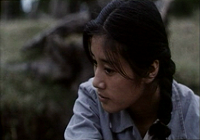
Sacrificed Youth (1985)
That idealization of rural labor possibly peaked in 1982 with Xie Jin’s The Herdsman, but by no means dissipated. It continues, but degrees of naturalism and complication were added to it as more objectivity started to become acceptable. Take as an example a seminal (and now neglected) film of the 1980s, Sacrificed Youth; director Zhang’s film, drawn from her own experiences during the Cultural Revolution, follows a girl who is “sent down” from a bourgeois family in Beijing to live in the far South of China, among the Dai people of Xishuanbanna.
The girl, Li, at first doesn’t fit in with her Dai family. While the family is kind, the other villagers look at her as an androgynous alien. She still wears her city clothing, a plain, blue uniform that contrasts with the brightly-colored, traditional clothes of the Dai. She awkwardly tries to do the work, but they consider her inept and too weak to do much of it. She looks at the group courting rituals between the young men and women, and wishes she could be so forward. She sees the girls bathing nude and wishes she could be so uninhibited. It is only when she finally dons Dai clothing that she feels feminine and empowered.
Even extensive landscapes appear intimate; they are not, as a rule, the broad aquarelle found in Five Golden Flowers and Visitors on the Icy Mountain. More often than not they are foregrounded by shadows that take up much of the frame. This sort of gradient, not only the atmospheric perspective made of fog, but also from the visible field to complete murk within the frame, makes for a convoluted visual take on its location, both leaning naturalistic and with more of a dream-like, remembered quality. That goes for the jungle scenes among banana plantations. In the village scenes, an extremely wide-angle look pulls a variety of data and textures into the frame, along with a hand-held, roving gait. Often we feel we are part of a camera crew, among the laughing girls in the forest for instance, a wobbly presence in the very midst of things.
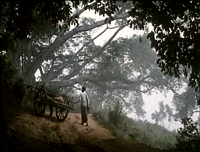
Sacrificed Youth (1985)
The film does a good job of showing Li’s feelings of alienation in her new environment, how in this setting the hegemonic Han way of life seems strange and unsustainable, whereas in earlier films it was the baseline, the “normal” culture. Shaffer writes that the film’s “critique of Han nationalism and the cultural nostalgia that becomes apparent reveal the provocative nature of this cinematic work.” While it could be interrogating those things, in some ways it could be unintentionally reinforcing them.
Its qualities of objectivity seem to indicate a revisiting of the previous, patronizing depictions of Yunnan’s minorities, but not entirely revising them. There is still this idea that the people of minority cultures are more pure, more child-like. When she brings herself to take part in the customs and lifestyle of the Dai, she says that she is getting in touch with something that was lost in childhood. While, on the one hand, it acknowledges the stagnating effects of correctness, conformity, and piety to the state political agenda, on the other it also perpetuates those notions of non-Han people being more sensuous and simpler, both more sexual and more childlike than the repressed Chinese majority.
The films discussed are by and large from before the ‘awakening’ of the “Fifth Generation” in the 1980s, whose filmmakers created the image of what Shaffer refers to as a self-exoticizing Han culture – perhaps more for the benefit of foreign film festivals than the common domestic market. The period between 1949 and then is widely considered a stagnant one in mainland Chinese cinema. But it is in fact rich with revelatory details, even if there are few overall great films to be found from it. They shouldn’t be treated solely as fluff or propaganda, but appreciated for the nuances that flourish in interesting places, and in spite of misguided stereotypes and heavy-handed political guidelines.
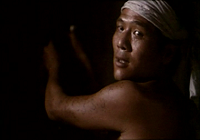
Sacrificed Youth (1985)
Although representations of non-Han people are to be found in Chinese films up to the present day, there is nothing approaching a ‘genre’ of minority film, nor are there popular hits, such as Five Golden Flowers and Ashima, with minority characters. When film production was state-run, and there was more of a political imperative to normalizing and essentializing minority cultures for largely Han audiences, the studios tended to favor exotic, mysterious, offensively simplistic depictions. As Shaffer notes, these images worked to reinforce Han perceptions of minorities just as much as it did to shore up the majority’s self-perception.
But it’s not just a thing of the past. Even now there are similar elements of representation that are perpetuated, albeit for different purposes. A film like Zhang Jiarui’s When Ruoma Was Seventeen (2002), set among the Hani of Yunnan, bears commonalities with older pictures, although handled in a contemporary way. Again, minority life is depicted as visually pleasing and unhurried. Older men seem to do little but smoke their bamboo water pipes. The Hani teenager of the title, a simple village girl who sells roasted corn, gets “discovered” by a Han man who wants to use her unusual beauty to get money taking photos with Western and Chinese tourists. She’s treated comparably to the terraced rice fields that people also come to photograph, to momentarily own before leaving.
Ruoma’s life in the village is shown as naïve and idealized, only changed or thrown into chaos by the exploitative forces of the outside world. The film has a much more complicated view on majority/minority interaction than earlier films that tried to show it as an important and inevitable cooperation, and that tried hard not to show the many dilemmas arising from cultural synthesis. Like minority women in earlier films, Ruoma is turned into a visual object to be marveled at, only upsetting the situation when she expresses her own desire and dream. The film recalls representations of the past to address issues of modernity, westernization, and the very “internal orientalism” that earlier films fed into.
Shaffer writes about how songs from Ashima and Five Golden Flowers are still remembered today, particularly in Yunnan, where they are considered representative of some of the local cultures. Visitors on the Icy Mountain has recently been adapted as a stage opera. Although some of the representations in these films are problematic, they end up being the most enduring images. Meanwhile films like Sacrificed Youth, that also challenge and examine those depictions, have fallen into obscurity.
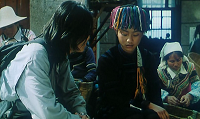
When Ruoma Was Seventeen (2002)
We must remember, perpetually remember, that these minority cultures have existed whether or not the Han are looking at them. However, as long as we look at them through cinema, we are essentially looking at them through a Han gaze. Arguably the continuation of certain minority traditions has only been allowed due to their attracting money from internal tourism. Therefore, being looked at is one of their methods of survival. Minority cinema can be seen, historically, as normalizing people’s co-opting into the folds of a gigantic, mono-ethnic state. However even the most offensively misguided or programmatic among them have value for what they say about the Han way of seeing the diversity of China, as much as what they say about the actual people depicted.
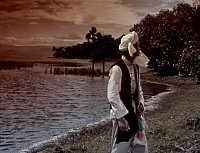
I’m impressed by the range of films you included in this essay. Especially intriguing is the extent to which attitudes about the minority cultures survive the Cultural Revolution substantially the same.